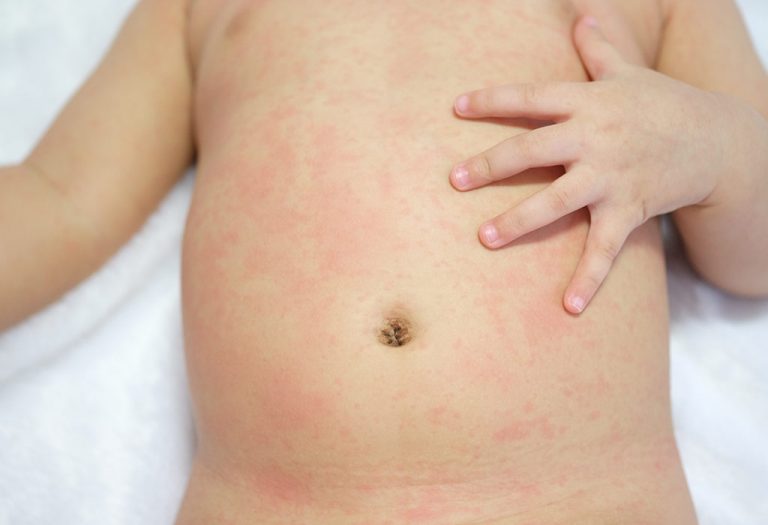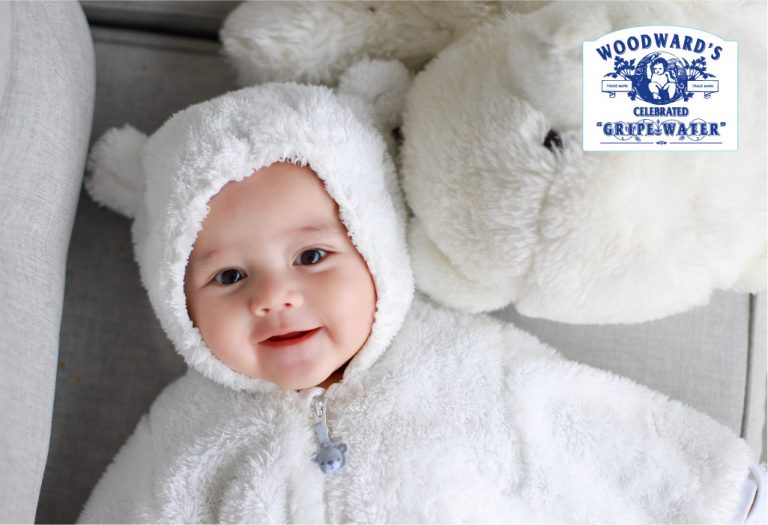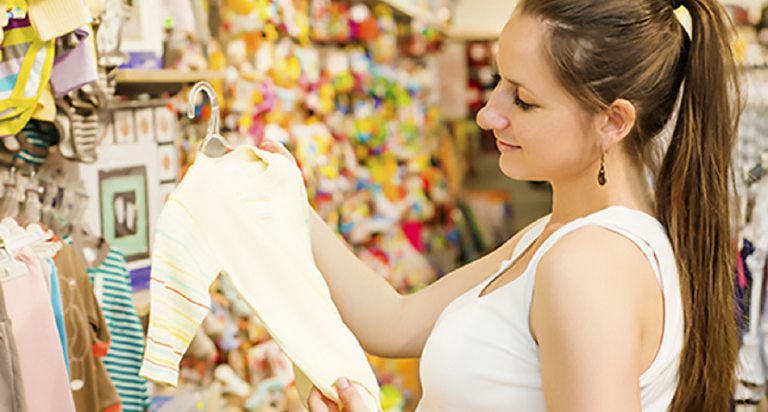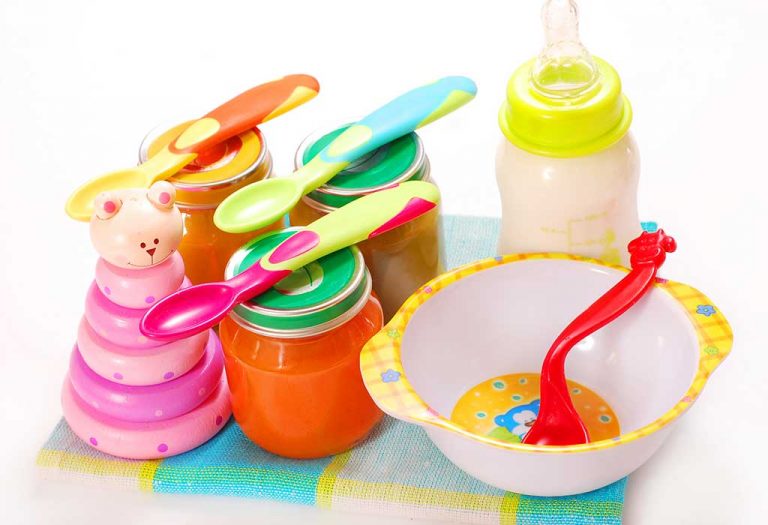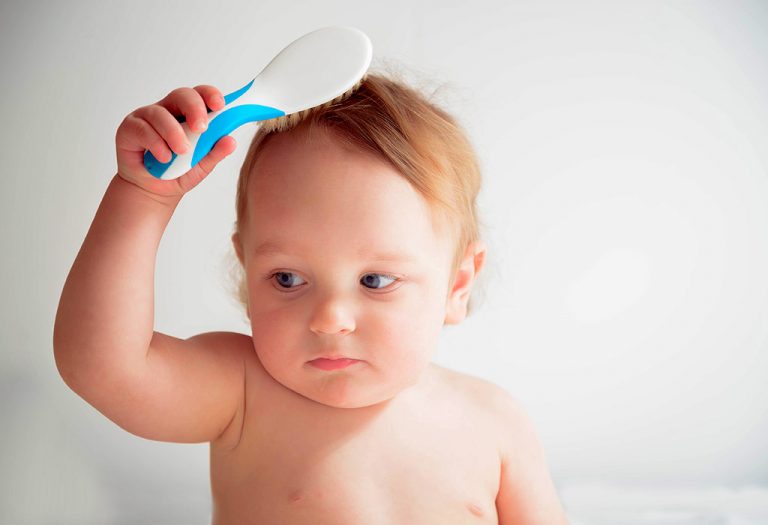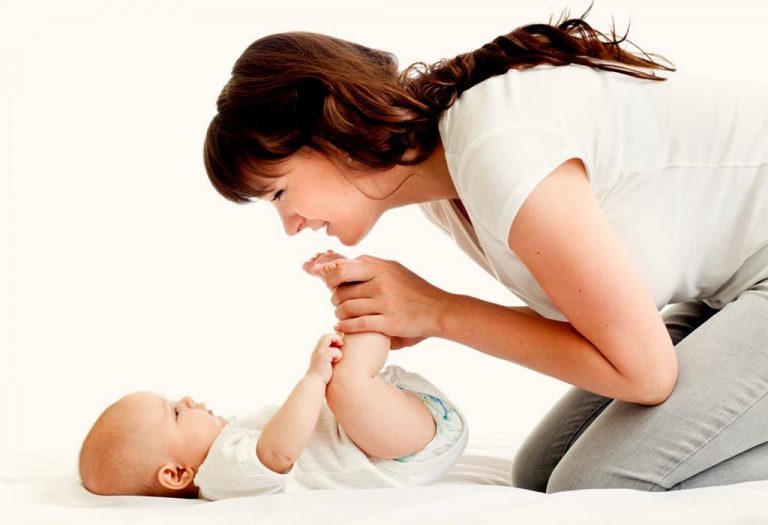Heat Rash (Prickly Heat) in Babies – Causes and Home Remedies

- What Is Heat Rash?
- Different Types of Heat Rash
- What Does Heat Rash on Newborn Look Like?
- Is Heat Rash Painful for Babies?
- Causes of Heat Rash in Infants
- Symptoms of Miliaria in Babies
- How to Diagnose Heat Rash in Newborn?
- Risk Factors for Heat Rash in Babies
- How to Treat Prickly Heat in Newborn Babies?
- Home Remedies for Prickly Heat in Infants
- How to Prevent Heat Rash in Babies?
- When to Call a Doctor?
- FAQs
Heat rashes, prevalent in infants residing in hot and humid regions, present a common concern for parents. Since babies and kids have a higher body temperature than adults, activities like crawling, climbing, and running can further elevate the body temperature and result in probable baby heat rashes. While they may prove bothersome, the good news is that the heat rash on infants is treatable, and there are effective ways to alleviate it. Learning to detect heat rashes in babies is crucial, empowering you to address any concerns promptly. Gain insights into the various causes triggering these rashes, explore the accompanying symptoms, and delve into the available treatment options. By understanding and managing heat rashes in your baby, you can ensure your baby’s comfort and well-being in challenging climates.
What Is Heat Rash?
Heat rash is also called Miliaria Rubra, Miliaria Crystallina, summer rash or prickly heat. As the name suggests, heat rashes are little, red bumps that show up on your baby’s skin as a result of excessive body heat (1).
Some of the places where heat bumps on babies appear are the stomach, chest, neck, buttocks, and around the crotch. If you make your baby wear a hat, heat rashes can appear on the forehead and the scalp as well. Baby rash on the neck is also common. If you see a heat rash in your baby, it is important first to relieve the itchiness associated with it.
Different Types of Heat Rash
Heat rash, a common concern in infants exposed to hot and humid climates, manifests in various forms, each with distinctive characteristics. Understanding the different types of heat rash is essential for effective management and alleviation of discomfort in babies. Here, we explore some notable types of heat rash and their unique features (2):
1. Miliaria Crystallina
Miliaria crystallina is the mildest form of heat rash, characterized by tiny, clear blisters on the skin’s surface. These blisters are filled with fluid and often burst easily, posing minimal discomfort for the baby.
2. Miliaria Rubra
Also known as prickly heat, miliaria rubra results in red, inflamed bumps on the skin’s surface. These can be accompanied by an itching or prickling sensation, making it crucial to identify and address them promptly.
3. Miliaria Profunda
Miliaria profunda is a less common but more severe form of heat rash. It occurs deeper in the sweat ducts, leading to larger, flesh-coloured lesions. This type may be associated with more pronounced discomfort and requires careful attention.
4. Miliaria Pustulosa
Miliaria pustulosa is characterized by the development of pustules, which are small, pus-filled bumps on the skin. This type of heat rash may cause additional irritation and requires appropriate care to prevent infection.
What Does Heat Rash on Newborn Look Like?
Heat rashes are tiny bumps that are clear or red in colour. They usually appear in clusters on different parts of the body (3).

Is Heat Rash Painful for Babies?
Heat rashes are generally not painful for the baby. They usually cause only mild discomfort. However, this depends on the severity of the heat rash. If the rash is deep, then it could end up being painful if the child constantly keeps scratching it.
It is important to understand that babies will not be able to communicate in any way other than crying. This is why you will need to constantly pay attention to the baby’s skin and look for signs to ensure that he is not in any discomfort. An extreme heat rash that is a consequence of overheating could even lead to a stroke.
Causes of Heat Rash in Infants
Heat rashes will appear if your baby sweats a lot. Due to excessive sweating, the pores of his skin get clogged, and sweat cannot come out. Children and babies are more prone to heat rashes, as their pores are smaller, as compared to adults (4).
If you live in hot and humid weather conditions, your baby is likely to get heat rashes. Heat rashes can appear during winter, too, if your baby has a fever or if you make him wear too many layers of clothing.
Symptoms of Miliaria in Babies
Heat rashes or miliaria look like tiny red pimples on your baby’s skin. Other symptoms include itchiness, crankiness and crying. Heat rashes get irritated by scratching or clothes. A secondary infection might also appear, though this is rare.
How to Diagnose Heat Rash in Newborn?
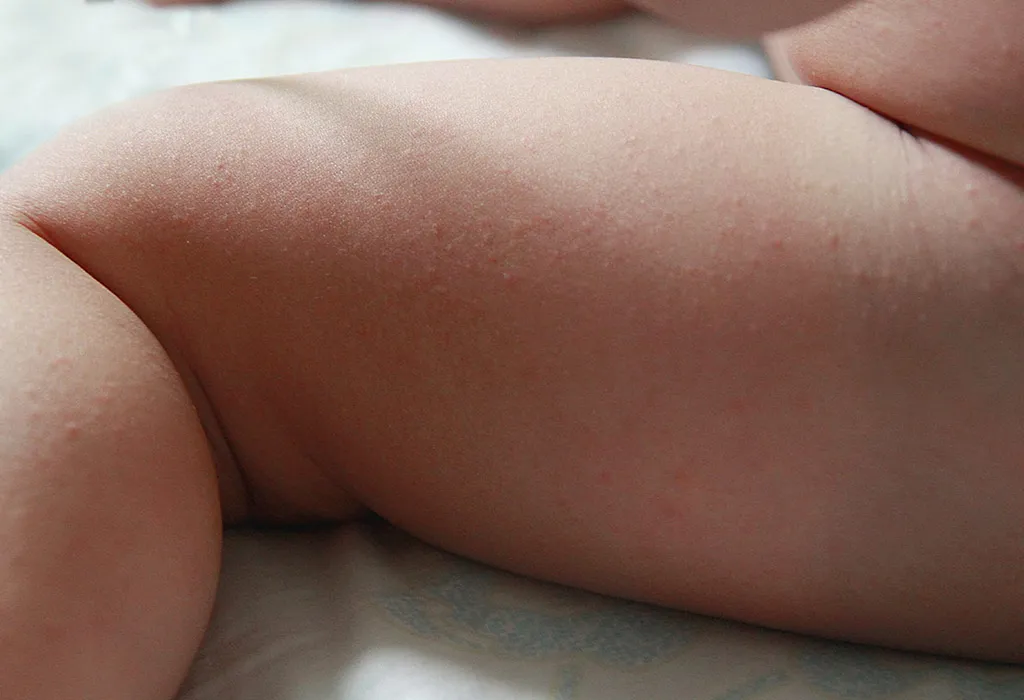
Miliaria can easily be identified and usually does not need medical care. If you’re wondering about how to get rid of heat rash on baby, know that, if the rashes do not go away in three to four days or your baby develops fever, make sure you call the doctor.
If your baby has rashes, be careful about these signs:
- Increased redness, pain, swelling, or warmth around the rashes
- Pus formation
- Fever
- Swelling of the lymph nodes in the neck, arm or groin
- The appearance of red streaks on the affected area
Risk Factors for Heat Rash in Babies
There are certain factors that put babies at risk for developing a heat rash.
1. Living in a Hot Climate
Hot and humid weather leads to overheating of the body, causing a heat rash. Moreover, humidity causes the baby to sweat and develop a heat rash. If you live in a hot climate, make sure to take adequate precautions to ensure your baby does not develop a heat rash (5).
2. Restrictive Clothing
Dressing your baby up in thick clothing or fabrics that trap heat can lead to a heat rash. Dress your baby according to the weather and avoid fabric such as nylon or rayon. Instead, opt for cotton, which is soft and breathable.
3. Swaddling
Swaddling in the hot weather can trap heat and lead to a heat rash. Avoid swaddling your child for long periods of time.
4. Nearby Heat Sources
Keeping a heat source such as a lamp or heater near the baby also causes a heat rash. Keep the baby in cool environment and choose cool lights around the house.
How to Treat Prickly Heat in Newborn Babies?
There is no specific treatment for heat rashes. However, when it comes to how to treat heat rashes on baby, you can do the following to give them relief from the symptoms associated with red rash on baby (6) (7) (8):
1. Reduce the Heat
Heat reduction in the body is a common and popular treatment for heat rash in babies. Remove your baby’s clothing or loosen it. Bathe the baby in cool water to get rid of the sweat and clear the pores. You can also wipe the body with clean and wet washcloths. This will bring down the temperature of the skin as well.
2. Keep the Skin Dry
Do not use a towel to dry your baby’s skin. Let it dry naturally, and take the help of a fan to cool the baby down. Do not use ointments or cream for heat rash unless the paediatrician has asked you to do so.
3. Allow the Skin to Breathe
This is an important aspect of baby care that many parents neglect. You need to ensure that your baby’s skin is exposed to natural air as much as possible. Keep him naked or make him wear something soft and loose.
Home Remedies for Prickly Heat in Infants
Looking for a heat rash in babies home remedy? You can use the following home remedies to treat skin rashes in babies:
1. Ice Cubes
Rubbing ice cubes on the rashes can do wonders. Wrap some ice cubes in a cloth and gently press on the rashes. Do not keep it pressed for a long time.
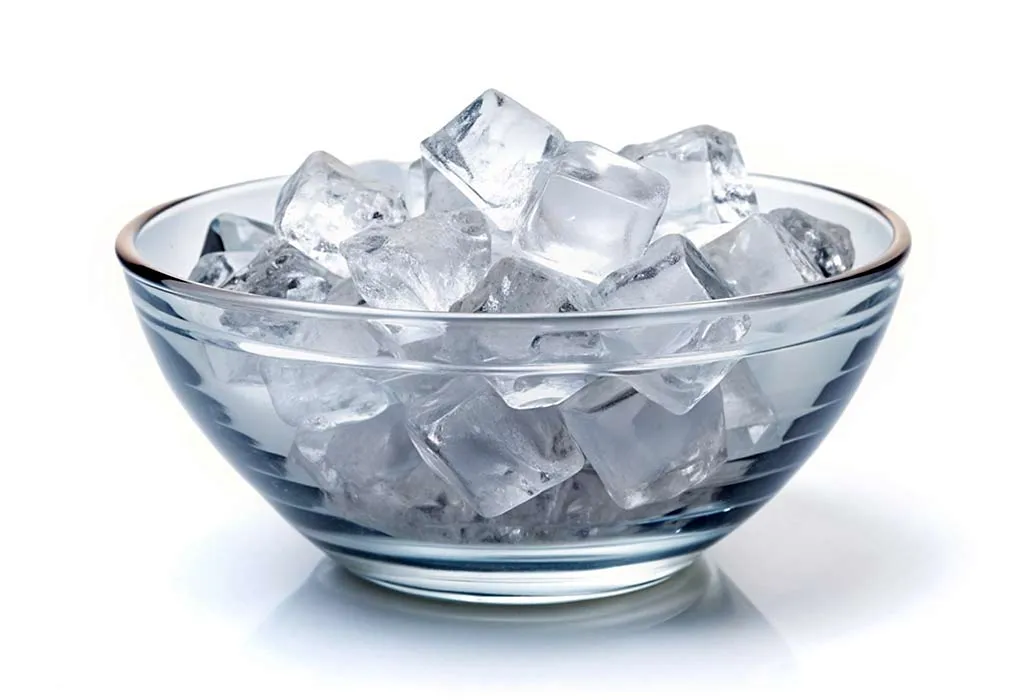
2. Baking Soda
Baking soda has mild exfoliant,anti-bacterial, and anti-inflammatory properties that help treat and prevent acne and rash on the skin. Make a solution of baking soda and water. Dip a washcloth in the solution and use the cloth to wipe the affected area. This will ease the symptoms considerably. You can also bathe your baby with a bucket of water containing 1 tablespoon of baking soda.
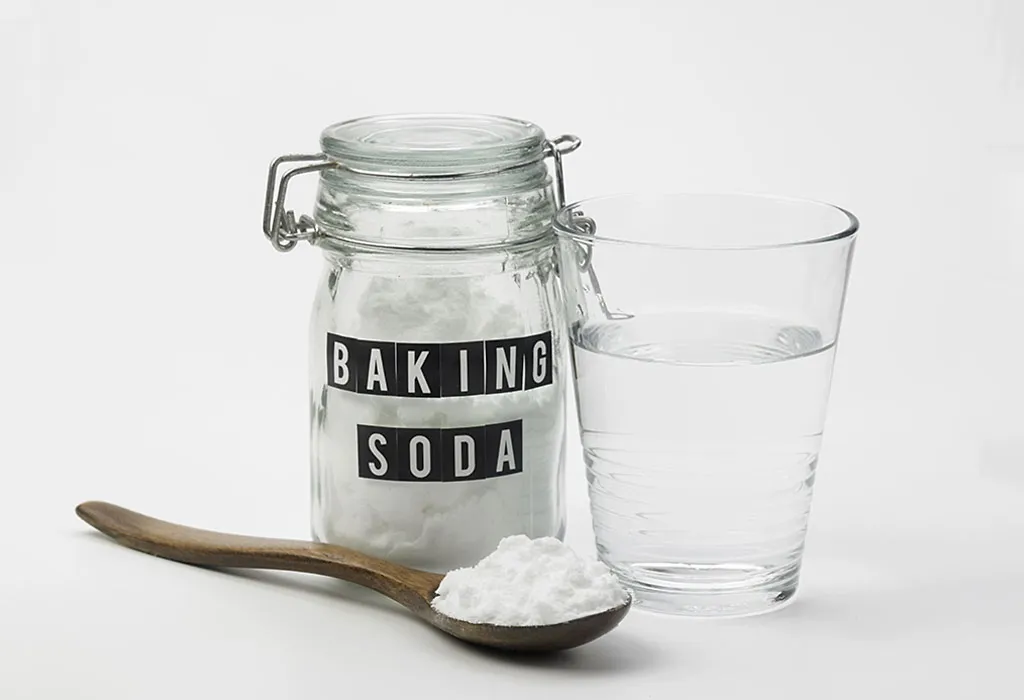
3. Oatmeal
This is one of the gentlest ways of getting rid of heat rash. Oats helps to absorb excess oil from the skin. It has antioxidant and anti-inflammatory properties, and it contains saponins, which are natural skin cleansers. Add one cup of oatmeal (powdered) to a bathtub of water and bathe your baby with this. The water will turn milky once you add the oatmeal to it. Make sure to use organic oatmeal and not the ones that come with preservatives. Bathe your baby for 15-20 minutes and pat him dry.
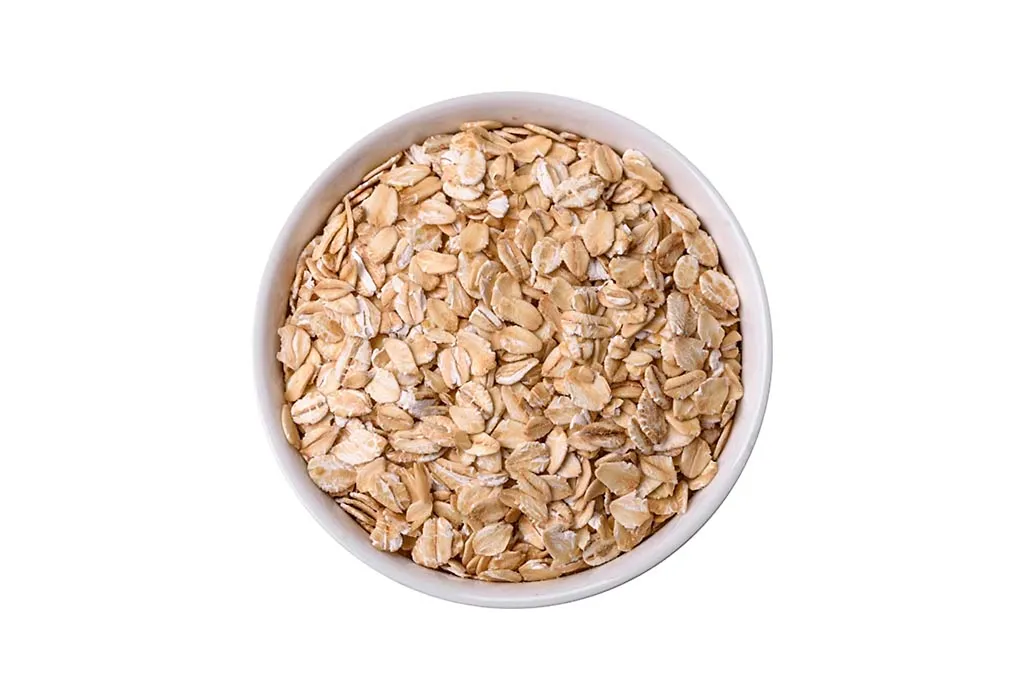
4. Sandalwood Powder
Sandalwood has antibacterial and anti-inflammatory properties, is a mild skin exfoliant, and has essential oils that nourish and moisturise the skin. It helps in cooling down your baby’s skin and reducing itchiness. Make a paste with equal parts of rose water and sandalwood powder. Apply this over the rashes to reduce the symptoms.
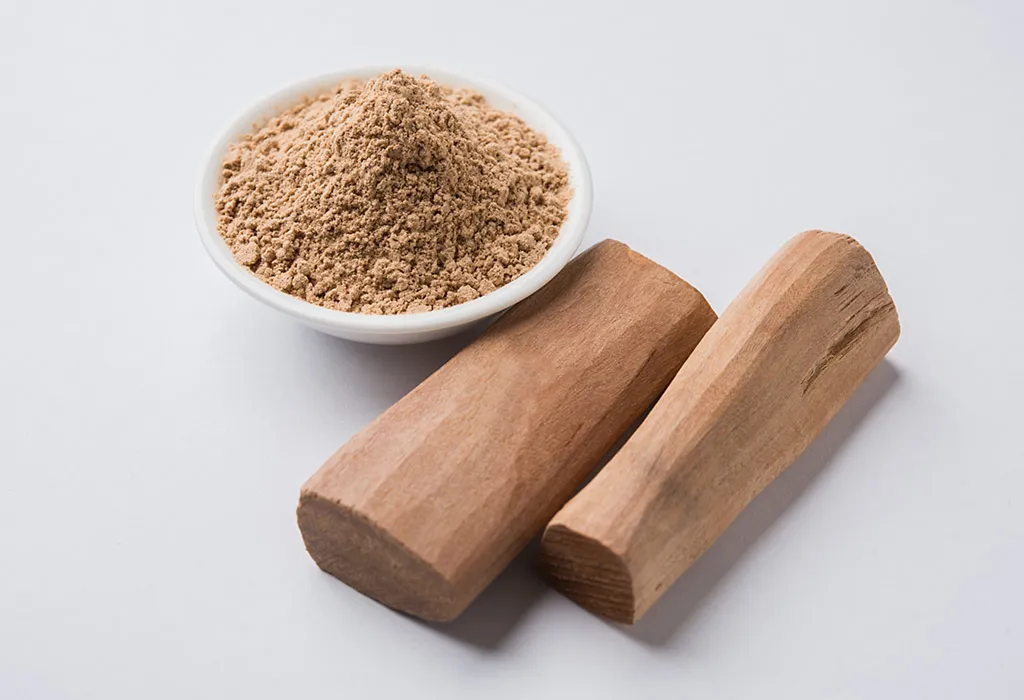
5. Fuller’s Earth
Fuller’s earth absorbs excess oil from the skin, helps to improve blood circulation & skin tone, and helps treat and prevent prickly heat and rashes. All you need to do is make a thick paste with Fuller’s earth and rose water. Apply the paste to the rashes to see your baby get instant relief from the itching.
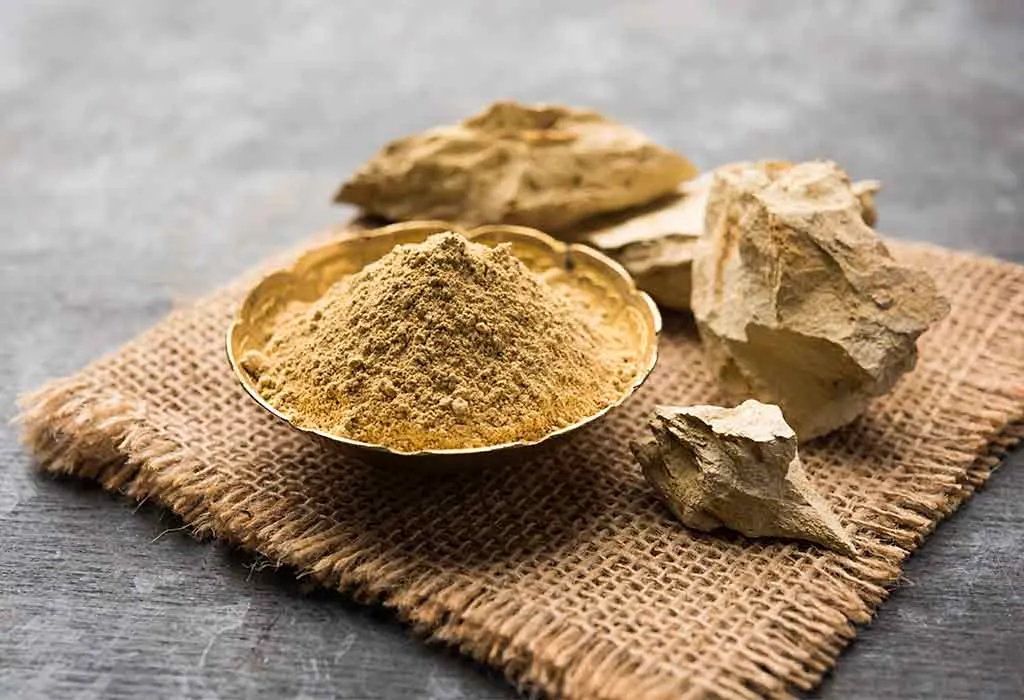
6. Neem
Make a smooth paste by grinding neem leaves and applying that paste on the affected area. Let the paste dry and rinse with cold water.
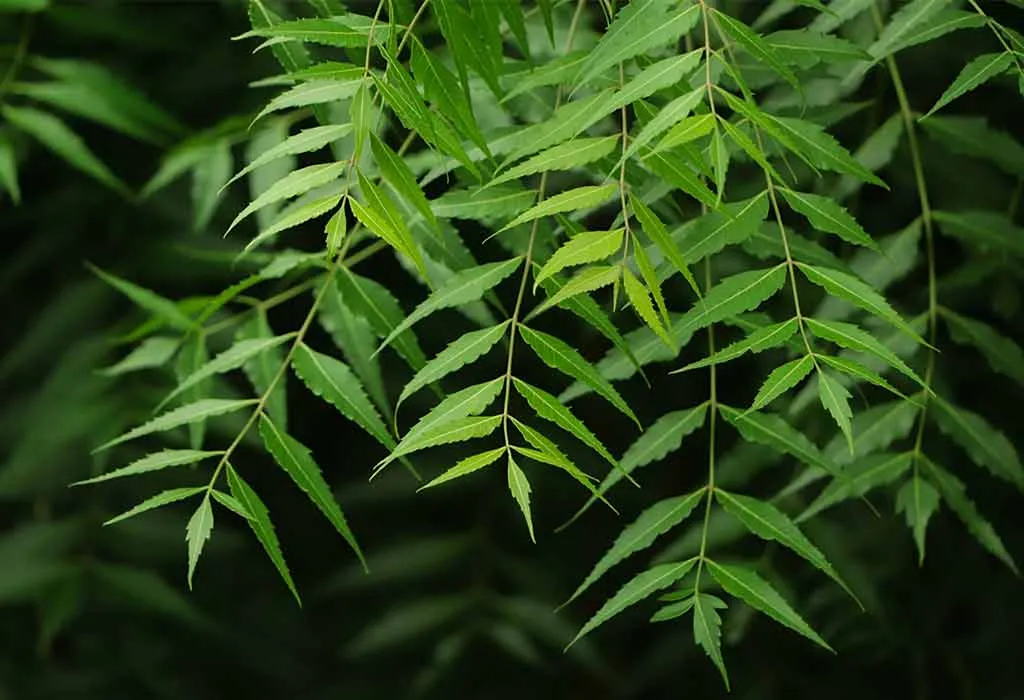
7. Aloe Vera
Aloe vera gel is also known to offer relief from heat rashes. If you have an Aloe Vera plant at home, you can scoop out the gel from the leaves yourself. If you are buying it off the shelf, make sure to use organic aloe vera gel without any preservatives or chemicals. You can safely apply this gel to soothe baby heat rash on the face as well as other body parts.
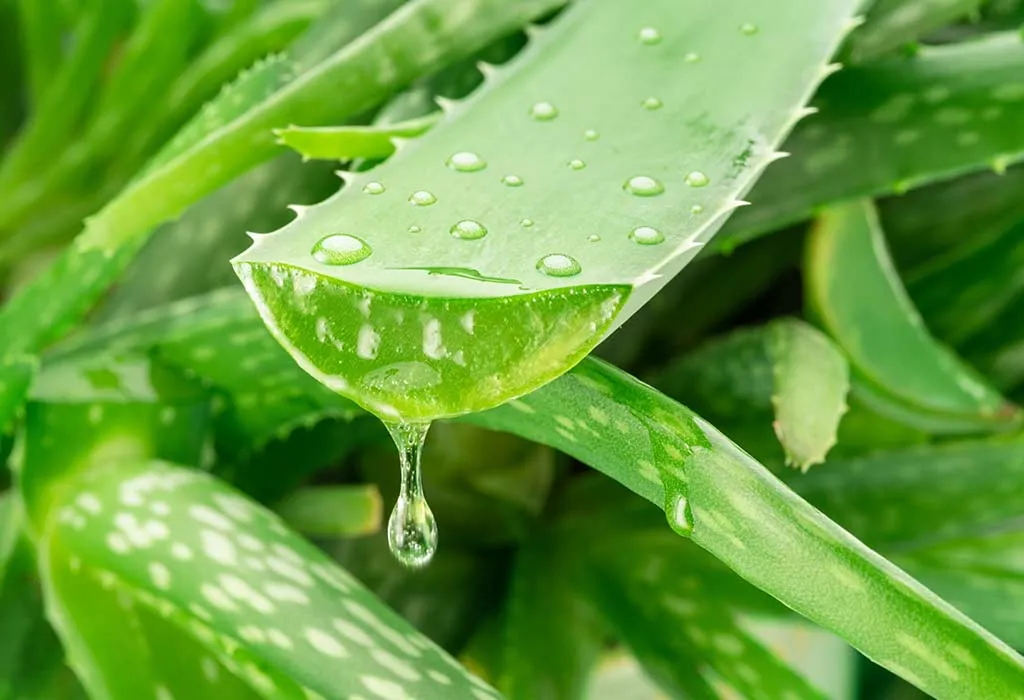
8. Cucumber
If there are heat rashes on baby’s face, cut one cucumber into numerous slices and put the slices on your baby’s skin. You can also grind the cucumber and apply the paste to the rashes for immediate cooling.
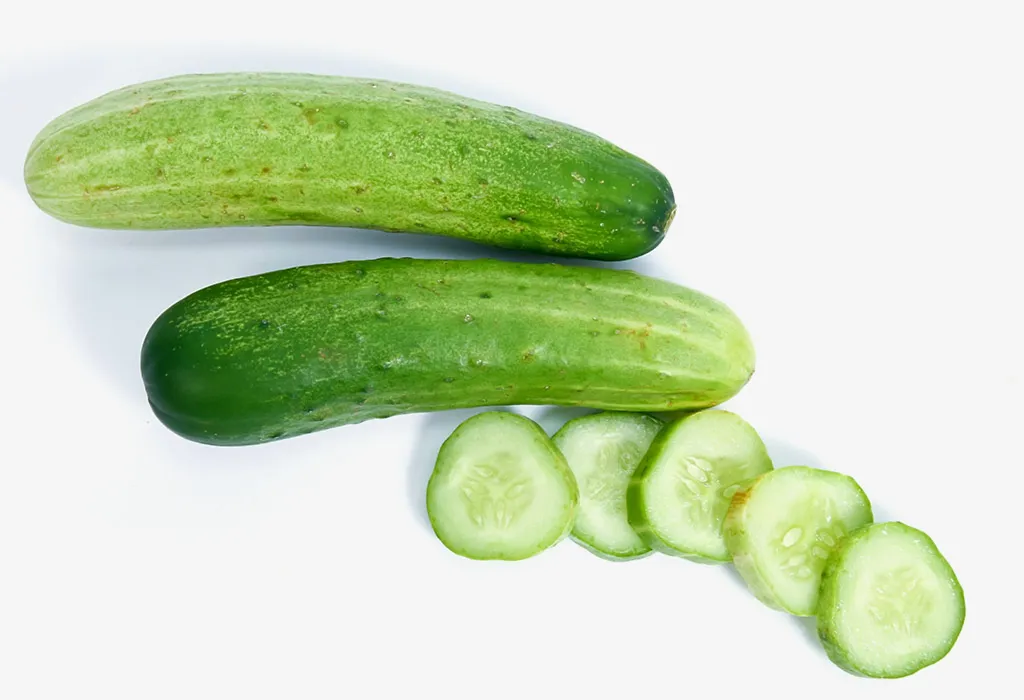
How to Prevent Heat Rash in Babies?
Here are some ways by which you can prevent common heat rash among babies (6) (8):
- Keep your baby away from the scorching rays of the sun. Keep him indoors in air-conditioned rooms, especially during peak heat times. When you take him out, ensure that he is in a shaded area. Also, ensure that your baby is well-hydrated
- Always dress him in comfortable and loose-fitting clothes, especially during the summer. Cotton is the way to go.
- Commercially available disposable diapers are made up of PVC plastic along with other components which prevent heat evaporation from the skin and cause prickly heat and rashes.
- Areas like the neck, armpits, and crotch tend to get sweaty. Wash these areas with cool water and ensure that they are dry
- Check if your baby is overheating at regular intervals. If his skin feels damp and warm, it is time to give him a shower or cool the skin down with a washcloth
- Make the baby sleep in an air-conditioned room or have a fan installed in the room. The fan or the air conditioner should not be directed to your baby. Just make sure that a gentle breeze reaches him while he sleeps.
When to Call a Doctor?
In certain cases, a heat rash on newborn babies can become quite severe, necessitating more than simple at-home remedies. If you observe the following signs, it is imperative to seek medical attention for your baby promptly (4):
- The rash is widespread across the entire body, causing significant discomfort or itchiness for the baby.
- Despite removing the baby from heat exposure, the rash either worsens or shows no improvement.
- The rash, initially confined to one area, is spreading without direct sun exposure.
- Push in the rashes appears.
- The baby exhibits increased fussiness and altered eating or sleeping patterns, and their skin feels warm to the touch. Immediate medical consultation is recommended in these instances.
- Swelling of the lymph nodes appears near the armpit or neck.
- Fever after the appearance of rashes.
FAQs
1. How long does a heat rash last on the baby?
Heat rash in infants typically lasts for a few days to a week. With proper care, such as keeping the baby cool and dry, the rash usually resolves on its own within this timeframe.
2. Can heat rash go away on its own?
Yes, in many cases, a heat rash can go away on its own with simple home care measures. Ensuring the baby stays cool, using lightweight clothing, and avoiding excessive heat can contribute to the natural resolution of the rash.
3. Does breast milk help with heat rash in babies?
Applying a small amount of expressed breast milk to the affected areas could provide relief, but it’s essential to monitor the baby’s response and consult with a healthcare professional for persistent or severe cases.
4. Can coconut oil be used to treat heat rash in babies?
Coconut oil is not recommended to treat infant heat rashes as it could block the skin’s pores and elevate the skin rash. Although it provides temporary relief from skin irritation, it is not recommended as a treatment. Instead, cold water compress or hypoallergenic lotions or creams specially formulated for babies are advised for babies. Always consult a doctor before using any home remedy.
5. Is Aloe vera good for soothing heat rash in babies?
Absolutely, aloe vera is a great agent for soothing and healing heat rash. however, it is advised to consult a doctor before applying aloe vera directly or aloe vera gel to the baby’s skin to avoid any skin allergy. Do avoid aloe vera if your baby’s heat rash has developed wounds or pus in them (9).
Living in tropical, humid regions always increases the chances of heat rash. As babies are too young to communicate, they may not be able to express their discomfort during the onset of the heat rash. It is up to the parents to scan the entire body of the baby and remain vigilant. In case your baby comes down with a heat rash, the tips shared above will help you take corrective action.
References/Resources:
1. National Library of Medicine – Miliaria
2. American Osteopathic College of Dermatology – Miliaria
3. Mayo Clinic – Common baby rashes
4. Cleveland Clinic – What To Do for Your Child’s Heat Rash
5. Mount Sinai – Babies and heat rashes
6. Seattle Children’s – Heat Rash
7. Saint Luke’s – When Your Child Has Heat Rash (Prickly Heat)
8. American Academy of Pediatrics – Heat Rash (Prickly Heat) in Babies & Young Children
Also Read:
Baby’s Skin Rash
Diaper Rash in Babies
Rashes On Baby’s Neck
Common Skin Allergies in Babies
Was This Article Helpful?
Parenting is a huge responsibility, for you as a caregiver, but also for us as a parenting content platform. We understand that and take our responsibility of creating credible content seriously. FirstCry Parenting articles are written and published only after extensive research using factually sound references to deliver quality content that is accurate, validated by experts, and completely reliable. To understand how we go about creating content that is credible, read our editorial policy here.







